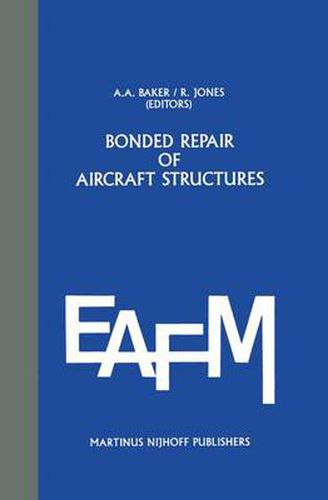Readings Newsletter
Become a Readings Member to make your shopping experience even easier.
Sign in or sign up for free!
You’re not far away from qualifying for FREE standard shipping within Australia
You’ve qualified for FREE standard shipping within Australia
The cart is loading…






This title is printed to order. This book may have been self-published. If so, we cannot guarantee the quality of the content. In the main most books will have gone through the editing process however some may not. We therefore suggest that you be aware of this before ordering this book. If in doubt check either the author or publisher’s details as we are unable to accept any returns unless they are faulty. Please contact us if you have any questions.
The conventional approach to through-life-support for aircraft structures can be divided into the following phases: (i) detection of defects, (ii) diagnosis of their nature and significance, (iii) forecasting future behaviour-prognosis, and (iv) pre scription and implementation of remedial measures including repairs. Considerable scientific effort has been devoted to developing the science and technology base for the first three phases. Of particular note is the development of fracture mechanics as a major analytical tool for metals, for predicting residual strength in the presence of cracks ( damage tolerance) and rate of crack propagation under service loading. Intensive effort is currently being devoted to developing similar approaches for fibre composite structures, particularly to assess damage tolerance and durability in the presence of delamination damage. Until recently there has been no major attempt to develop a science and tech nology base for the last phase, particularly with respect to the development of repairs. Approaches are required which will allow assessment of the type and magnitude of defects amenable to repair and the influence of the repair on the stress intensity factor (or some related parameter). Approaches are also required for the development and design of optimum repairs and for assessment of their durability.
$9.00 standard shipping within Australia
FREE standard shipping within Australia for orders over $100.00
Express & International shipping calculated at checkout
This title is printed to order. This book may have been self-published. If so, we cannot guarantee the quality of the content. In the main most books will have gone through the editing process however some may not. We therefore suggest that you be aware of this before ordering this book. If in doubt check either the author or publisher’s details as we are unable to accept any returns unless they are faulty. Please contact us if you have any questions.
The conventional approach to through-life-support for aircraft structures can be divided into the following phases: (i) detection of defects, (ii) diagnosis of their nature and significance, (iii) forecasting future behaviour-prognosis, and (iv) pre scription and implementation of remedial measures including repairs. Considerable scientific effort has been devoted to developing the science and technology base for the first three phases. Of particular note is the development of fracture mechanics as a major analytical tool for metals, for predicting residual strength in the presence of cracks ( damage tolerance) and rate of crack propagation under service loading. Intensive effort is currently being devoted to developing similar approaches for fibre composite structures, particularly to assess damage tolerance and durability in the presence of delamination damage. Until recently there has been no major attempt to develop a science and tech nology base for the last phase, particularly with respect to the development of repairs. Approaches are required which will allow assessment of the type and magnitude of defects amenable to repair and the influence of the repair on the stress intensity factor (or some related parameter). Approaches are also required for the development and design of optimum repairs and for assessment of their durability.